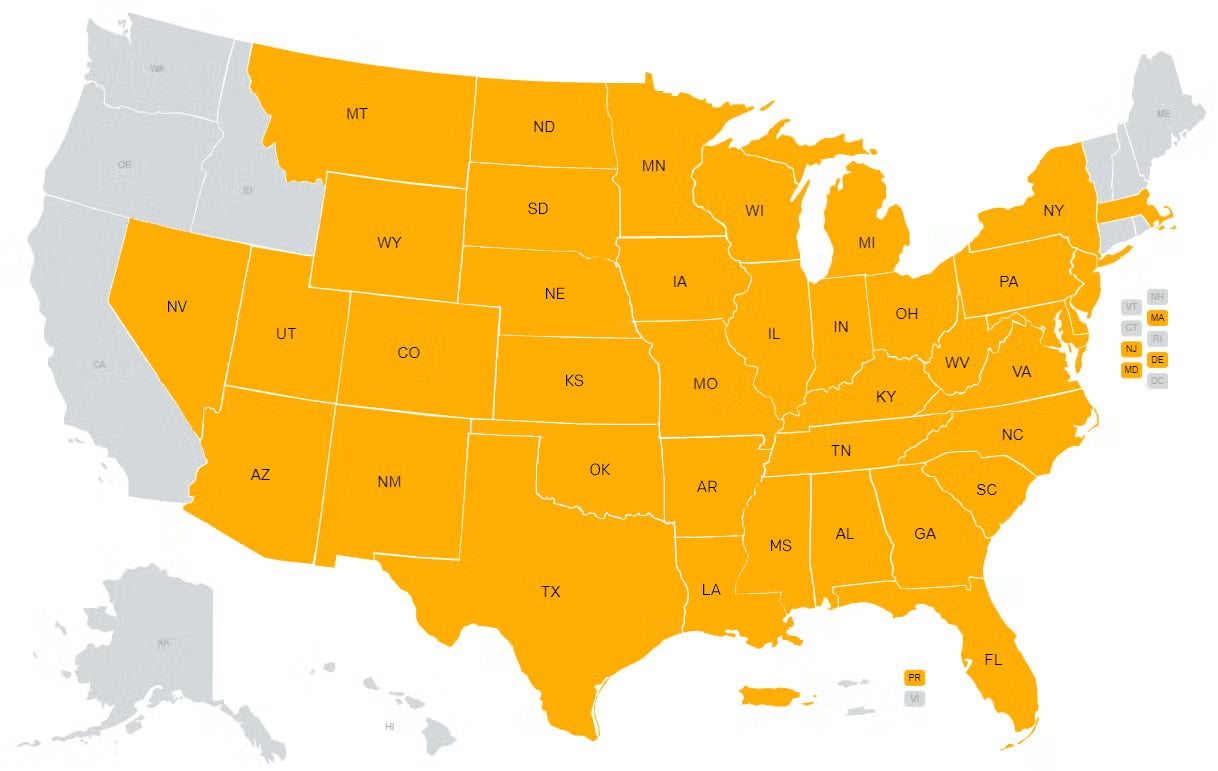September 4, 2025
Coal Ash in the United States: Addressing Coal Plants’ Hazardous Legacy

Click on the map to learn about coal ash in 39 states and Puerto Rico.
Coal Ash in States, Territories, Regions
Puerto Rico (En Español)
Coal ash remains one of our nation’s largest toxic industrial waste streams. For decades, utilities disposed of coal ash — the hazardous substance left after burning coal for energy — by dumping it in unlined ponds and landfills. Earthjustice analyzed industry data to explain, state by state, how and where coal ash is disposed and which dump sites are not yet monitored or regulated.
The EPA’s 2015 Coal Ash Rule created the first-ever safeguards for coal ash disposal, but many coal ash dumps remained unregulated due to sweeping exemptions for legacy coal ash ponds and inactive landfills. At many of these legacy sites, the EPA determined that coal ash has contaminated groundwater, but the 2015 rule did not require monitoring, closure or cleanup. Industry has often blamed pollution from regulated dumps on nearby unregulated dumps, a sleight of hand that allows them to avoid cleanup responsibility. In many states, the number of unregulated toxic dumps far exceeded the number of regulated dumpsites.
In 2024, after years of litigation and grassroots activism, the EPA issued a new rule that extended federal monitoring and cleanup requirements to hundreds of previously excluded older coal ash landfills and ponds that have been leaking toxic pollution into groundwater.
The rule addresses gaps in the 2015 Coal Ash Rule that left half of coal ash unregulated and allowed coal plants to avoid cleaning up toxic coal ash across the country.
Click on the states above to learn more about the number of federally regulated landfills and surface impoundments (ponds) in each state, as well as how many coal ash dumps were not regulated by the 2015 Coal Ash Rule.
Where are Coal Ash Dump Sites?
View a national map of power plant sites across the country that have currently regulated and/or legacy coal ash units.
Coal ash contains hazardous pollutants including arsenic, boron, cobalt, chromium, lead, lithium, mercury, molybdenum, radium, selenium, and other heavy metals, which have been linked to cancer, heart and thyroid disease, reproductive failure, and neurological harm. Industry’s own data indicate that across the country 91% of coal plants are currently polluting groundwater above federal health standards with toxic pollutants.
The EPA must move quickly to stop the flow of toxic releases from hundreds of leaking dumps and require effective cleanups.
The companies that profited from burning coal for decades must not be allowed to walk away from dealing with the hundreds of coal ash dumps leaking toxic waste into groundwater.
For More Information
Christine Santillana, Senior Legislative Counsel, Earthjustice, csantillana@earthjustice.org
Lisa Evans, Senior Counsel, Earthjustice, levans@earthjustice.org.
Earthjustice fights in the courts for a long-term solution to the toxic menace of coal ash. And we act on behalf of dozens of clients and over 100 coalition partners to defeat legislative attempts to subvert federally enforceable safeguards of coal ash.
Earthjustice’s Clean Energy Program uses the power of the law and the strength of partnership to accelerate the transition to 100% clean energy.